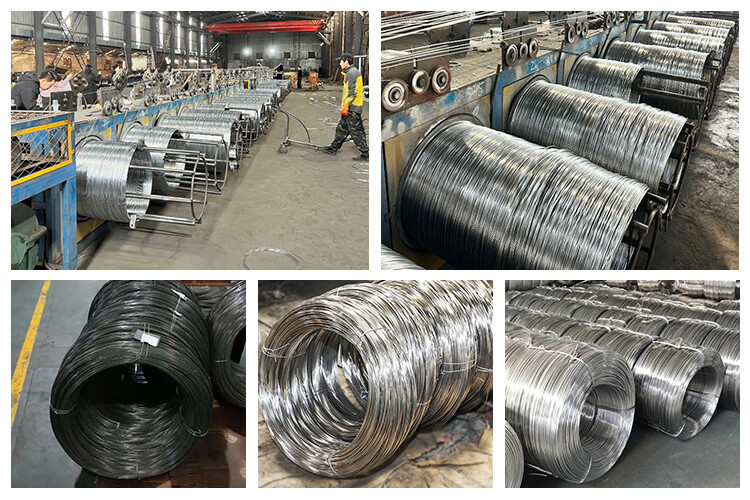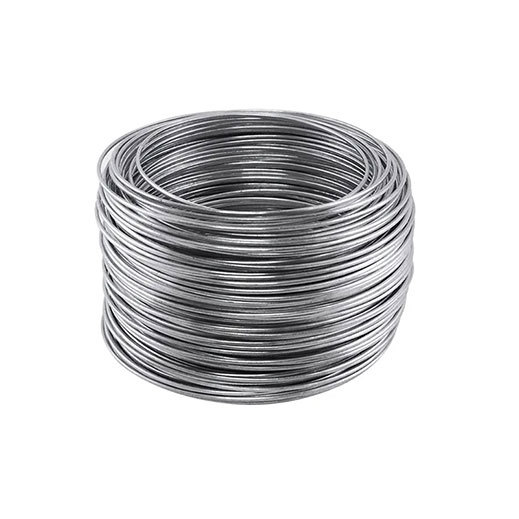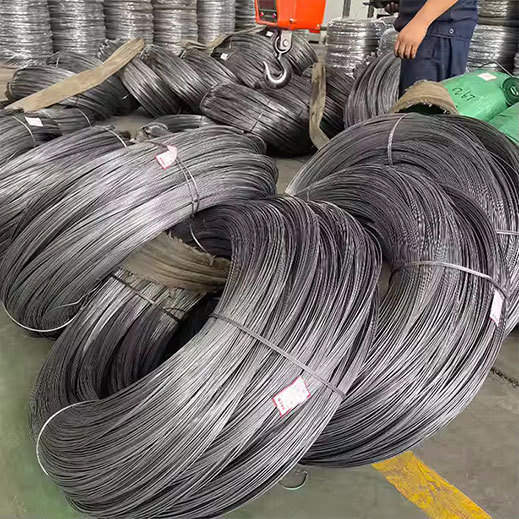Wire rod Product
Smooth Reinforcing Bar
Factory Showcase
Wire Rod Product
| |
| Wire rod usually refers to small-diameter round steel delivered in coils. It is a type of round steel produced in traditional double rolling mills and modern high-speed wire rod mills. The diameter of the wire rod is in the range of 5-19 mm (usually 6-9 mm), and the lower limit is the minimum size of the hot-rolled steel section. Low carbon steel wire rods in carbon steel wire rods are commonly known as soft wires, and medium and high carbon steel wire rods are commonly known as hard wires. Wire rod is the raw material for making various wire meshes. It can also be directly used as building materials and processed into mechanical parts. The materials are mainly Q235/195/215 and other low, medium and high carbon steels. | |
| 1. Classification of Reinforcing Smooth Reinforcing Bar | |
| Classification by steel type | low carbon steel wire rod, high quality carbon steel wire rod, alloy steel wire rod, stainless steel wire rod |
| Classification by use | wire rod for welding rod, wire rod for low carbon steel wire, wire rod for rope wire, wire rod for piano wire, wire rod for spring wire; |
| Classification by product use status | Steel rods used directly in hot-rolled state: Hot-rolled wire rods are mostly used in the construction industry as smooth steel bars when used directly. Steel rods that need further cold processing: Wire rods can be used as raw materials to be drawn and cold-rolled to make various types of steel wires, steel wire products, screws, rivets and other standard parts. The output of wire rods generally accounts for 8% to 12% of the output of hot-rolled steel. |
| 2. Characteristics and applications of several common types of wire rods | |
| 82B Steel Wire Rod | 82B steel wire rod is a high carbon steel wire rod, and its research mainly focuses on winter aging behavior. Studies have shown that the mechanical properties of 82B steel wire rod will change under different temperature conditions, especially in low temperature environments, it is prone to brittle fracture. This characteristic has a serious impact on wire drawing production |
| Cable Steel Wire Rod | Cable steel wire rod, commonly known as copper clad steel, can be used for communication lines, TV cable lines and other purposes after being processed into copper clad steel wire. Its main chemical composition includes low carbon steel, high carbon steel, etc., and it is suitable for multiple industries such as electricity and petrochemicals3. |
| Stainless Steel Wire Rod | Stainless steel wire rod has excellent corrosion resistance and is widely used in food processing, medical equipment and other fields. Common models include SUS 416, 420F, 430F, etc. These models of stainless steel wire rod have good processing performance and corrosion resistance |
| Alloy Steel Wire Rod | Alloy Steel Wire Rod is a steel containing multiple alloy elements with high strength and good toughness. Common alloy steel wire rods include 38CrMoALA, 60Si2MnA, etc. These alloy steel wire rods are widely used in machinery manufacturing, automobile manufacturing and other fields |
| Special purpose steel wire rods | Special purpose steel wire rods are designed and manufactured according to their specific application requirements. For example, 60SiMn wire rods are mainly used to manufacture high-strength fasteners. The chemical composition and mechanical properties of this type of steel wire rod are carefully adjusted to meet the needs of specific application scenarios. |
CONTACT US
Smooth Reinforcing Bar
| |
| 1. Different types of plain round steel bars and their characteristics | |
| Diameter Range | Tensile Strength |
| 6-50mm | 335MPa |
| 6-50mm | 400MPa |
| 6-50mm | 500MPa |
| 6-50mm | 235MPa |
| 6-50mm | 300MPa |
| 6-50mm | 295MPa |
| 6-50mm | 390MPa |
| 6-50mm | 500MPa |
| 6-50mm | 500MPa |
| 2. Detailed steps of the production process of plain round steel bars | |
| Raw material preparation First, you need to prepare the raw materials, usually scrap steel or iron ore. These raw materials will be sent to the blast furnace for smelting to produce crude molten steel. Converter refining The crude molten steel will enter the converter for further purification to remove impurities. This process is like giving it a deep cleansing mask, making it purer. Continuous casting and rolling Then, this pure molten steel flows into the continuous casting machine, where it cools and solidifies into a billet with a certain shape (such as a square billet). Cooling and testing The last step is cooling, which is generally cooled to room temperature by natural air cooling or forced air cooling. Of course, it must undergo strict quality inspection before leaving the factory to ensure that each steel bar meets the standards. | |
| 3.Performance characteristics of Smooth Reinforcing Bar | |
| (1) Good plasticity: easy to weld, high strength-to-weight ratio. (2) Ductility and bending properties: can be easily bent into the desired shape without breaking. (3) Easy to weld: both manual arc welding and automatic welding machines can be used well together to ensure beautiful and firm joints. | |
| 4. Application of Smooth Reinforcing Bar | |
| Plain round steel bars are widely used in beams, columns, floor slabs, roofs, walls, concrete pavements, bridge decks, airport runways, tunnel linings, box culverts, dock floors, prefabricated components and other fields of industrial and civil buildings. | |
CONTACT US

CONTACT US
Jincheng Metal Products (Tianjin) Co., Ltd.




